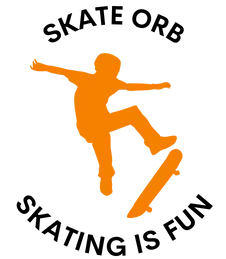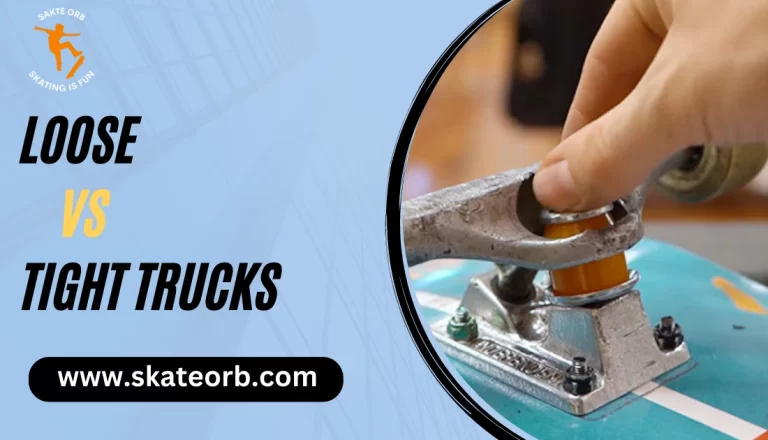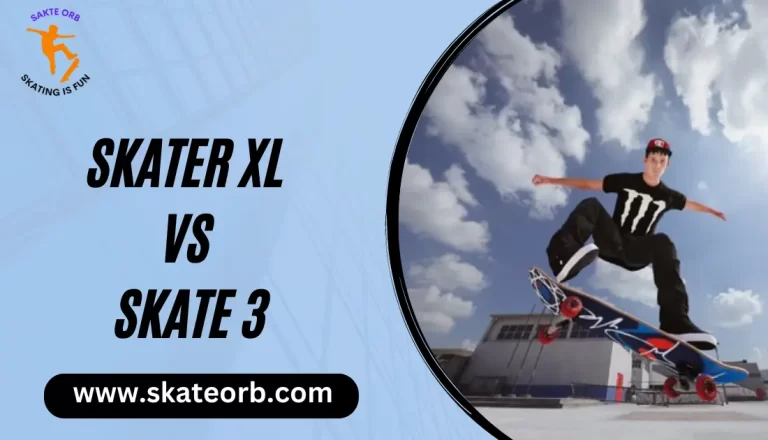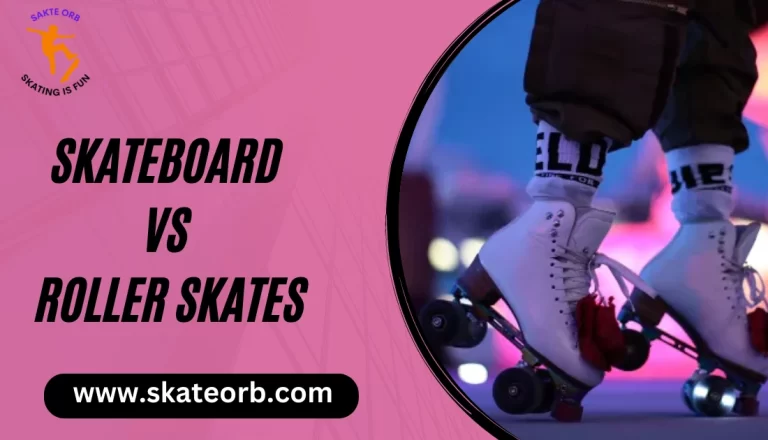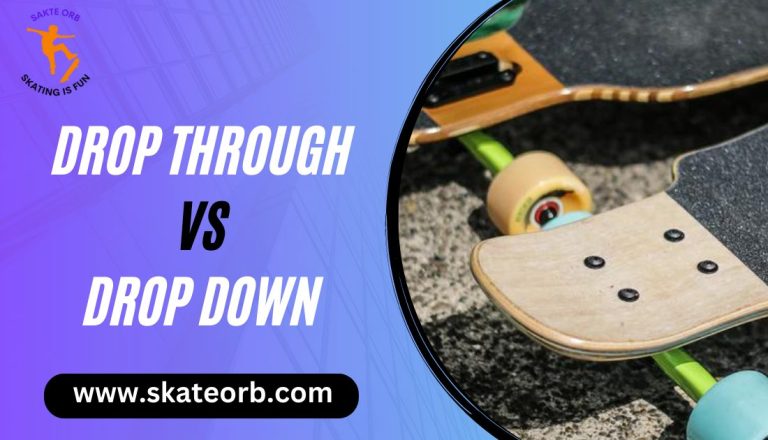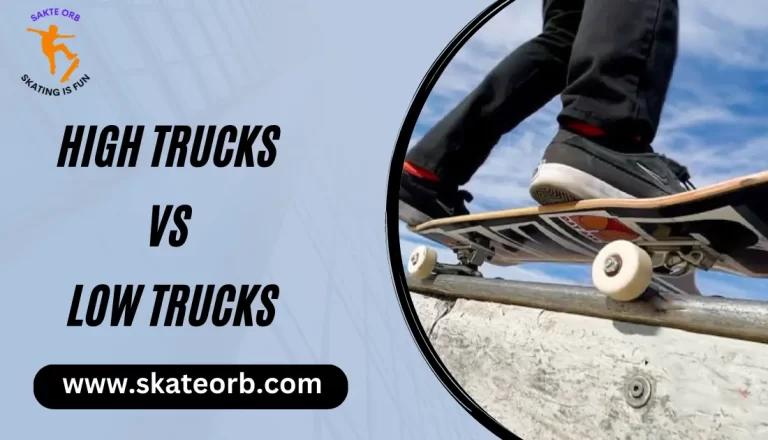Skateboard vs Cruiser vs Longboard | What’s The Difference

I discovered that the fundamental distinctions between a skateboard, longboard, and cruiser skateboard are not merely size and shape, but also the many skate disciplines that each board is best suited for after investigating several skate disciplines and working in a skateboard distribution. No need to worry; they’re all a lot of fun, regardless of one you select.
All of them have four wheels, two trucks, and a deck, but what distinguishes a skateboard from a longboard or a cruiser, exactly? There are actually quite a few, and whether you’re a novice or an experienced skateboarder, it’s important to recognise what makes these boards unique.
Skateboard
Skateboarding is a sport that involves using skateboards as equipment. It is typically constructed of a 7-8 ply maple plywood deck that has been particularly developed, and it has polyurethane wheels joined to the underside by two skating trucks.
Skateboarders can move by pumping their legs in features like a bowl or half pipe, or by pushing with one foot while the other one balances on the board. Another way to utilise a skateboard is to stand on the deck while the board is sloping downward and let gravity move the board and the rider. Right-handed riders are referred described as riding “goofy” because of their leading foot.
Skateboards come in two primary varieties, longboards and shortboards. Skateboards must be concave in order to accomplish tricks, therefore board shape is also crucial.
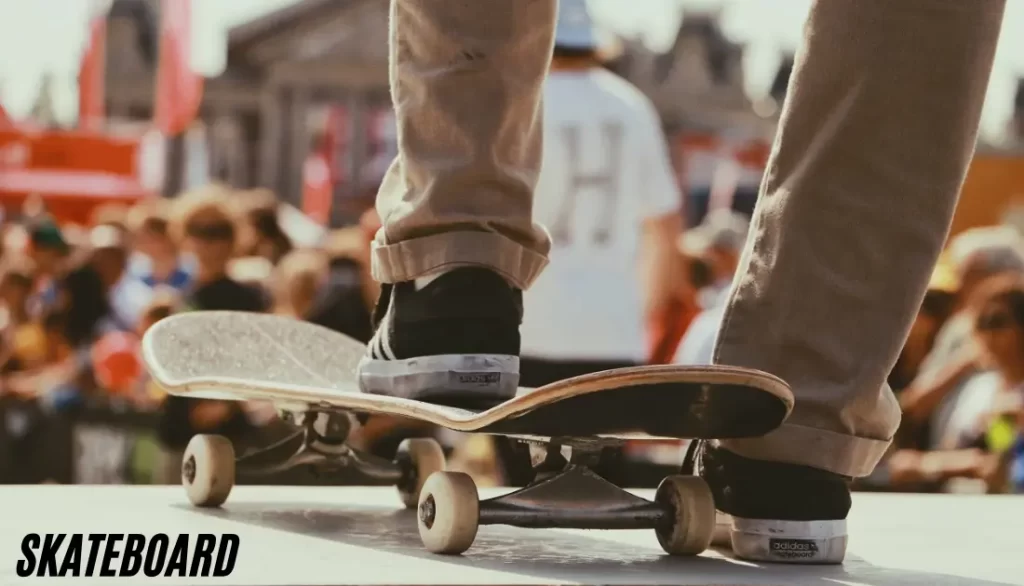
Pros
- St for tricks
- Most commonly used by skaters
- Popular choice
Cons
- Not ideal for rough surface
Longboard
Although there is wide variation in the geometry and construction of longboards, they are characterised by longer decks and wheelbases, larger-diameter and softer (lower-durometer) wheels, and frequently lower riding heights compared to street skateboards. Longboards are one of the first varieties of skateboards.
Early longboards drew inspiration from surfboard design, imitating and mimicking the motion of riding a surfboard, but they were modified to ride on streets in a practise known as sidewalk surfing.
Longboards come in a wide range of designs and are often made with features that are most suited for downhill, commuting, and cruising. Longboarding, the general activity of riding a longboard, can also refer to more specialized forms like longboard dancing, which involves stepping up and down on the board and making other motions while riding, and freestyle, which can include trick skating and pulling off tricks that are frequently performed on street skateboards.
Pros
- Superior stepping
- Fast
Cons
- Heavy
- Not so responsive
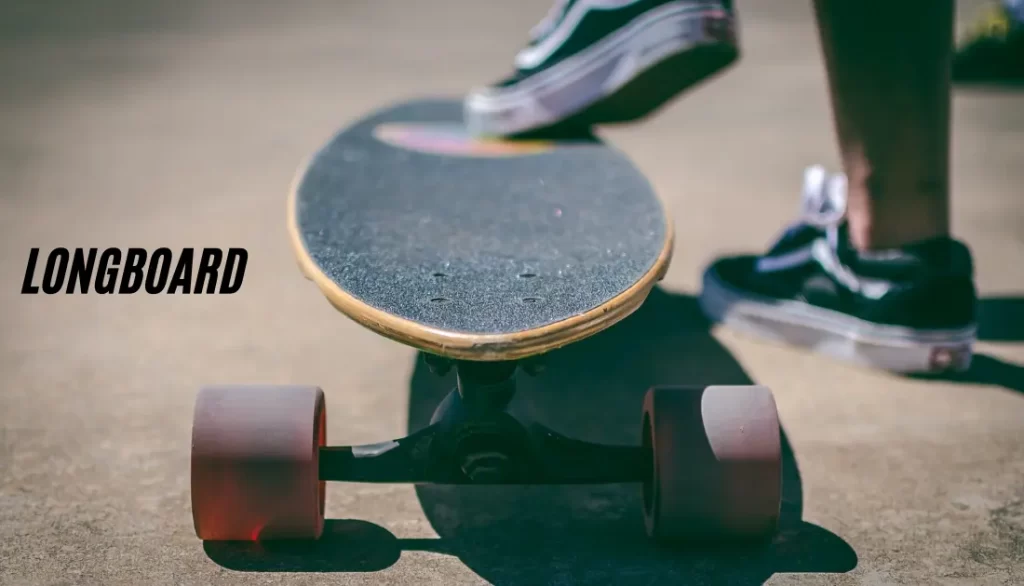
Cruiser
Cruiser skateboards are adaptable, simple to ride, and ideal for riders looking for a chic and cosy mode of transportation.
They are made for a comfortable and fun ride on the streets, pump tracks, neighbourhood parks, or even college campuses.
In this thorough guide, we’ll delve into the world of cruisers and examine their distinctive characteristics, construction materials, typical cost, and the riding style they’re most appropriate for. As the name implies, cruiser skateboards are made primarily for relaxed cruising and casual riding.
Since they are typically shorter and lighter than longboards, they are simple to transport and store. Cruisers combine elements of longboards with standard skateboards, creating the ideal balance of portability and stability.
A cruiser’s main design features include the following:
- Medium length or shorter deck.
- Sometimes kicktail in the back.
- Larer, more durable wheels than skateboards.
- Simple to move about.
Some people are so particular about what constructed a legitimate skateboard that they won’t even use the name “cruiser skateboard”, instead they only use the word “cruiser”, just be aware that a cruiser refers to a good board for quick cruises on flat water.
Pros
- Perfect for commuting
- Deal with obstacles very easily
Cons
- Unstable
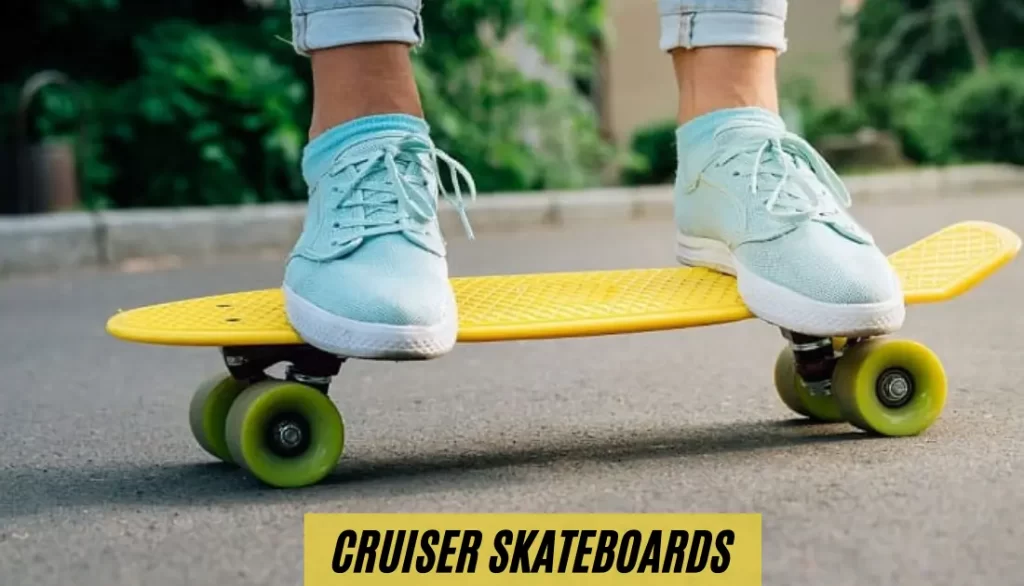
Differences between Skateboard vs Cruiser vs Longboard
skateboard vs cruiser vs longboard are different from each other in different aspects. The difference is given below in detail:
Difference in terms of trucks
All three of these boards trucks have virtually the same fundamental anatomy. You need to base plate to fasten your trucks to the deck, an axle to support your wheels and allow them to pivot a hanger, bushings, a kingpin to secure your hanger and bushings, and a bushing to regulate the stiffness of your trucks as you spin.
However, skateboard and cruiser trucks have a kingpin that poinbts inward towards the middle of the board, whereas longboard trucks have one that points outward.
Additionally the geometry of longboard trucks offers in terms of the angle at which the hanger protrudes from the pivot cup. At high speeds, this steeper angle makes it simpler to spin and manage your board.
Conversely the same trucks used for skateboard and cruisers have a smaller pivot angle, which alters how turning feels leaning from side to side makes it simple to turn and manoeuvre a skateboard or cruiser, despite the differences. Just a little bit les tactile than a longboard truck, it seems.
Remember that it does not work that way before you assume. You can switch out longboard trucks, for skateboard/ cruiser truck. Due to the different deck types, skateboard trucks wouldn’t result in an unstable ride.
Difference in terms of wheels
The size are hardness are the two main factors in which wheels of skateboard, cruiser, and longboard differs:
Maneuverability
Skateboards and cruisers have the advantage when it comes to maneuvrability. Cruiser are the perfect fusion of a skateboard and a longboard thanks to their hybrid form. While maintaining the size and stability of skateboard, the slight curvature of the deck makes it more agile than a longboard.
Conversely, skateboards are the most agile of the three because they are made for complex tricks and manoeuvres.
White less agile than the other two, logboards make up for this lack of agility by being able to reach higher speeds and maintain stability through sharp turns.
Impact Defence
In terms of impact resistant skateboard, longboard, and cruisers all have benefits and drawbacks.
Longboards greater size and softer wheels may help them absorb more shock and have better impact resistance when navigating uneven terrain.
Skateboards are a great choice for shredding the streets because of their smaller, more urable wheels, which are made to handle the force of tricks and jumps.
While cruiser skateboards typically have softer wheels than standard skateboards, this can make more comfortable to ride over bumby terrains, which makes them less reliable over bumby terrain.
Finally your riding style and the distinctive feature of the board you choice wi;; determine the impact and standard of your board.
Size
Skateboards have smaller wheels because speed isn’t always the most important factor. Instead, you want to come up to speed as quickly as you can because runups to a feature are constrained. As a result, a smaller wheel works better for this king of board.
It is significant to note that a wheel with a bigger diameter accelerates more slowly yet maintains speed remarkably effectively. On the other hand, a smaller diameter wheel accelerates significantly more quickly but has a lower top speed.
The fact that longboards and cruisers are designed with rolling long distances, maintaining speed, and moving quickly in mind explains why they frequently feature larger wheels. This is considerably simpler to do with the wheel that has a bigger diameter.
Hardness
Now, the grip, ride quality, and speed of the wheel are all influenced by the wheel’s hardness. Since it absorbs ground vibrations, a softer wheel provides better grip and a smoother ride. Softer wheels have the drawback of not holding speed as well since they absorb your momentum. This can be easily understood by comparing riding a bike with a flat tyre versus one that is properly filled.
A tougher wheel like one rated at 87a, is preferred by longboarders who prefer to slide since it rolls more quickly. Casual longboarders and cruiser board riders prefer softer wheels like 78a because they provide a smoother ride by absorbing more cement bumps.
For better speeds on smooth concrete surfaces and less resistance while rotating out of tricks, skateboards emply wheels with a stronger durometer.
Hard wheels 99a- 104a are typically preferred by skaters who exclusively skate in skateparks or indoor facilities since they are simpler to slide and manoeuvre on.
In contrast to a soft wheel, a harder wheel produces more vibrations, less grip, and a higher top speed.
While most skateboard wheels are between 97 and 101 durometers, longboard and cruiser wheels typically range from 78 to 87.
Difference in terms of shapes
Skateboards that are often used feature a popsicle form with a titled nose and tail to pop the deck. Additionally, they have a concave, allowing for technical tricks.
Concave can be found on some cruisers, but it’s usually less extreme than on skateboards. Some cruisers are flat, while other feature a tail to help you to hop up and down curbs. Depending on what you want to do with it.
Longboards don’t have an angled nose and tail, instead, some of them have a slight concave while others are entirely flat. They are longer than the other boards. Which obviously gives them more stability.
Although traditional skateboard shapes are largely the same. Longboards shapes includes:
- Swallowtails
- Flat
- Nose
Deck Size
Longboard frequently features a modest concavity, with freeriding and dance models being more curved than cruiser models. However, compared to a skateboard, their nose and tail tend to be flat. These boards come with a variety of ends, including the well known drop through flat nose, pintail, and swallowtail.
In addition to deck size, we also need to take skateboard, longboard, and cruiser shape into account. A popsicle shaped skateboard’s tilted nose and tail have a specific use. These hints frequently let the rider pop the board for tricks.
It is more difficult to flip on a cruiser than on a standard skateboard because of its less rounded shape. Additionally, cruiser give you the option to have flat ends if your skateboard has angled ends.
Prices
There are different prices of skateboard, cruiser and longboard which are given below. These prices helps you to decide which one is the best choice for you:
| Skateboard | Prices |
| Tony hawk complete skateboard | $63 |
| Monster Jam 31 inch skateboard | $21 |
| Krytonics locker complete skateboard | $28 |
| Longboard | Price |
| Atom Longboards longboard | $151 |
| Sendlor longboard | $59 |
| Biltzart dual motor longboard | $399 |
| Cruiser | Price |
| Tony hawk complete cruiser skateboard | $43 |
| DB street cruiser skateboard | $145 |
| Super cruiser 36’’ skateboard | $50 |
Purpose of Skateboard vs Cruiser vs Longboard
There are different purpose of skateboard, cruiser and longboard which is given below in detail:
| Skateboards | Technical skatingTricks |
| Longboards | Fast ridesBeginnersDownhill races |
| Cruiser Boards | Riding in trafficShort Commutes |
Conclusion
Visit your neighbourhood skate store if you wish to purchase one of these skateboards. These folks are knowledgable and can provide you the right kind of the board. Looking at a photograph is inferior to actually seeing the various boards.
If you can’t return it for free, you can also feel and try the harder board online. In first manner, you may still return it and the wheels, trucks, and board will remain spotless. Make sure your footwear is spotless. Hope this article helps you to get enough information about skateboard vs cruiser vs longboard.
FAQs
Are Cruisers and Longboards the Same?
A cruiser is a shorter, lighter board that is yet responsive and maneuvrable enough for riding in confined urban spaces. Although it has a wider turning radius, a full sized longboard is more stable at high speeds. Longboarding is excellent for long distance trips, commutes on open roads, and descending steeper hills.
Can a Cruiser Perform Tricks?
Cruiser skateboarders may do ollies, flip tricks, no complies, and other maneuvres thanks to the kicktail’s ability to act like a regular skateboard despite the shorter nose.
On a Skateboard, how do you Quickly Stop?
The most frequently employed method is this one. Pivot your front foot while skating so that it is parallel to your board, as though you are preparing to push off. The bottom of your shoe ought to be able to halt you.

Who Is Roy Harris
Hey there, I’m Roy Harris, and skateboarding is my life.
Growing up in sunny Southern California, I fell head over heels for skateboarding at an early age. From the moment I stepped on a skateboard, I knew it was my calling.
